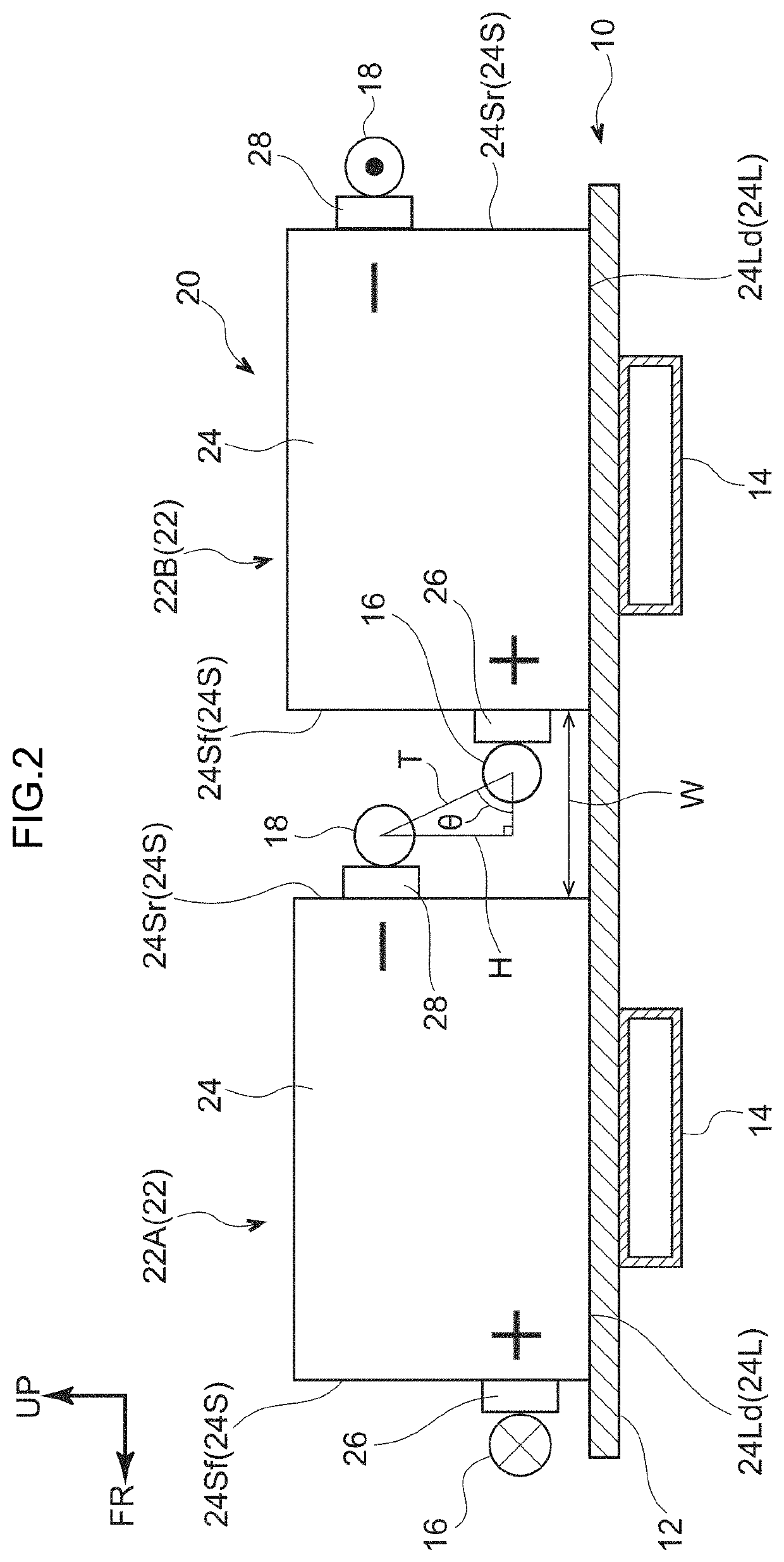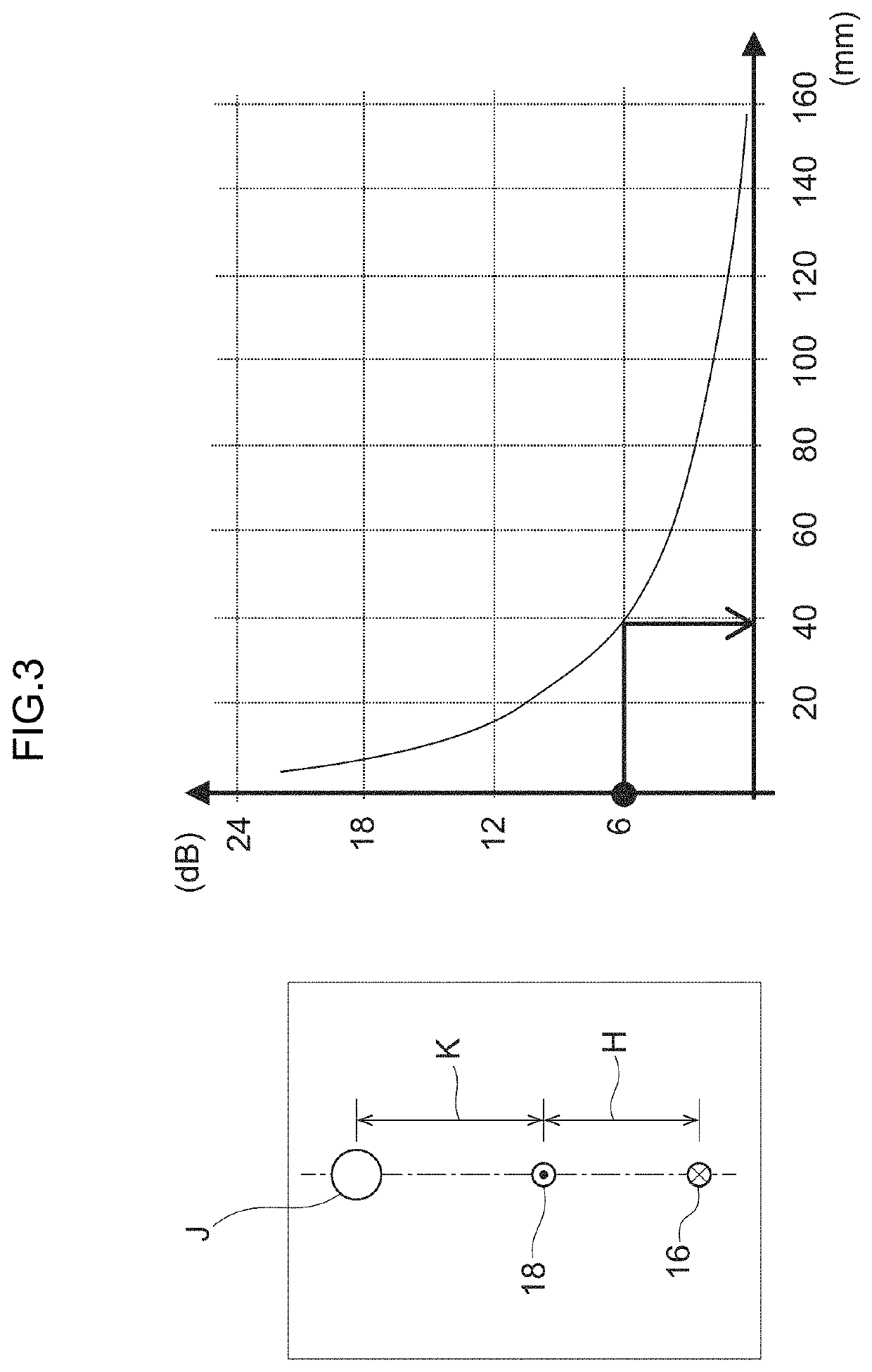Battery cooling structure
- Summary
- Abstract
- Description
- Claims
- Application Information
AI Technical Summary
Benefits of technology
Problems solved by technology
Method used
Image
Examples
first exemplary embodiment
[0037]First, a battery cooling structure 10 according to a first exemplary embodiment is described.
[0038]As shown in FIG. 1 and FIG. 2, a battery cooling structure 10 is provided with a battery 20 below the floor of an electric car that serves as a vehicle. The battery 20 includes cell groups 22, in each of which plural cells 24 are arrayed in a thickness direction thereof at an upper face of a cooling plate 12 that is formed in a substantially rectangular plate shape. Each cell 24 is formed in a cuboid shape with a side wall 24L that extends in a long side direction thereof oriented to the lower side. A plural number of the cell groups 22 are arrayed in the front-and-rear direction.
[0039]In FIG. 1 and FIG. 6, gaps between the cells 24 arrayed in the thickness direction are depicted as being wider than in actuality. That is, the actual cells 24 are arrayed to form the cell groups 22 with substantially no gaps between the cells 24 in the thickness direction (see FIG. 8). Because the ...
second exemplary embodiment
[0060]Now, the battery cooling structure 10 according to a second exemplary embodiment is described. Portions that are the same as in the first exemplary embodiment are assigned the same reference symbols and, as appropriate, are not described in detail.
[0061]As shown in FIG. 8, in the second exemplary embodiment, the cell groups 22 are disposed at the upper face of the cooling plate 12, at the left and right sandwiching a vehicle width direction central portion of the cooling plate 12. The cell groups 22 are arranged in, for example, six rows counted in the front-and-rear direction. The six cell groups 22 at the left side are electrically connected separately from the six cell groups 22 at the right side.
[0062]Positive terminals (specifically, the positive terminals 26) and negative terminals (specifically, the negative terminals 28) of all of the left and right cell groups 22 are electrically connected to an inverter (not shown in the drawings), which serves as an example of elect...
PUM
 Login to View More
Login to View More Abstract
Description
Claims
Application Information
 Login to View More
Login to View More - R&D
- Intellectual Property
- Life Sciences
- Materials
- Tech Scout
- Unparalleled Data Quality
- Higher Quality Content
- 60% Fewer Hallucinations
Browse by: Latest US Patents, China's latest patents, Technical Efficacy Thesaurus, Application Domain, Technology Topic, Popular Technical Reports.
© 2025 PatSnap. All rights reserved.Legal|Privacy policy|Modern Slavery Act Transparency Statement|Sitemap|About US| Contact US: help@patsnap.com



